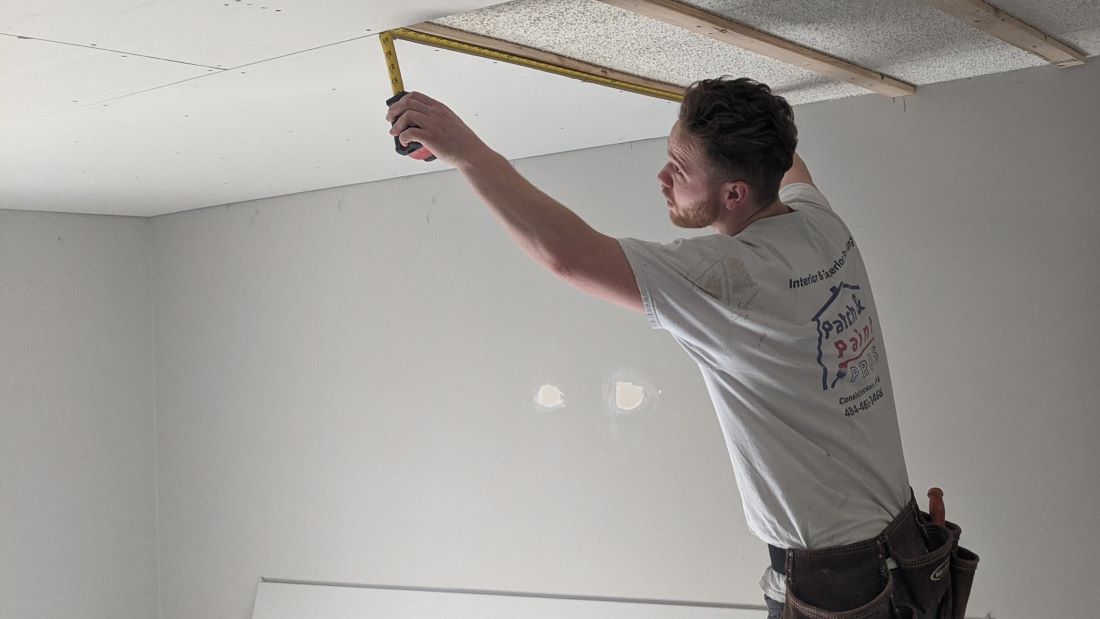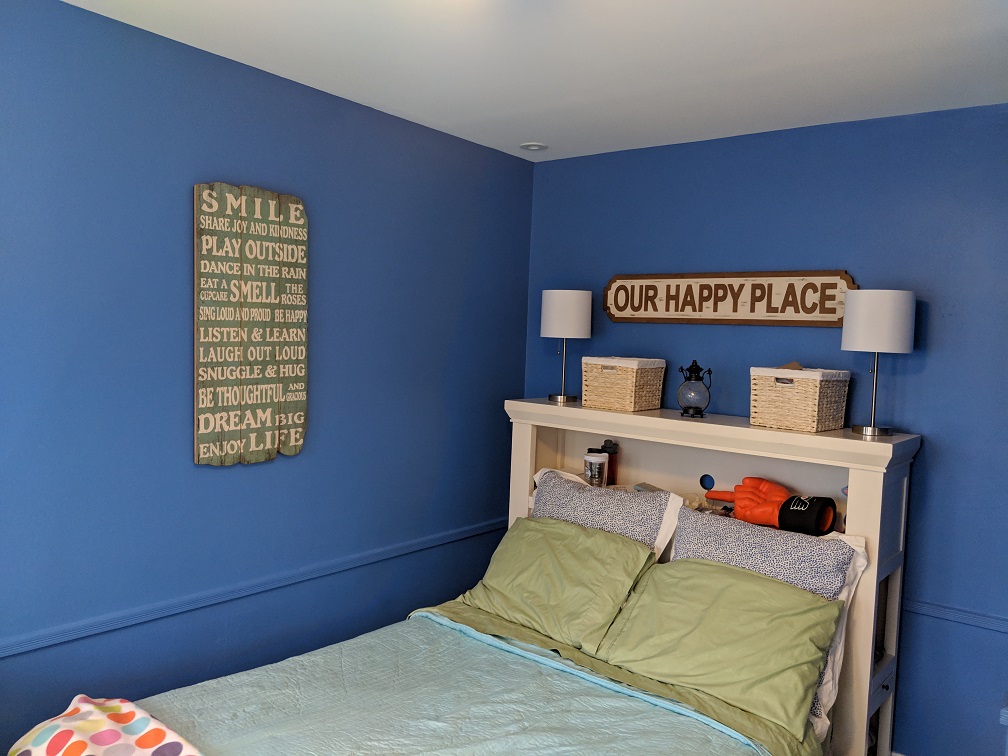Are you planning to give a fresh look to your home interiors? Choosing the right paint color can be a daunting task. With so many options available, it’s easy to get overwhelmed and make a wrong choice. However, with some careful consideration and testing, you can find the perfect paint color that suits your style and preferences.
Before making any final decisions, start by determining your color preferences and style. Do you prefer warm or cool colors? Are you looking for a classic or modern look? Knowing what you want will help narrow down your choices and make the decision-making process easier. In this article, we’ll provide some tips on how to test and sample interior house paint colors before making a final decision. By following these tips, you’ll be able to confidently choose the right color for your home interiors that matches your personal style and taste.
Determine Your Color Preferences and Style
You’ll want to take some time to really think about what colors and styles appeal to you, as this will guide your decision-making process when it comes to testing and sampling interior house paint colors. Consider color psychology – how different hues can affect mood and perception. For example, blue is calming while red is energizing. Think about how you want each room in your home to feel, and choose colors accordingly.
To help narrow down your options, create inspiration boards by collecting pictures of rooms or design elements that catch your eye. This could be done through magazines, online sources such as Pinterest or Instagram, or even taking photos of spaces you encounter in daily life (such as a friend’s well-decorated living room). Assembling these images in one place can help you identify patterns in the types of colors and styles that appeal to you most.
Use Paint Samples
Using paint samples is a great way to get an idea of what colors will look like on your walls. Color swatches are small pieces of paper or cardboard with a sample of the color you’re considering. You can find them at most hardware or paint stores, and they’re usually free or very cheap.
To use them, simply tape them to your wall and observe how they look in different lighting conditions throughout the day. Another option is to use virtual tools that allow you to upload a photo of your room and see how different colors would look on your walls. This can be helpful if you want to avoid the hassle of painting multiple color samples on your actual walls. Whichever method you choose, make sure to evaluate the colors in both natural and artificial light, as this can greatly affect how they appear.
Test in Different Lighting Conditions
When selecting paint shades for your walls, it’s important to consider how they will look under different lighting conditions. Both natural and artificial light can significantly impact the appearance of a color. To get a better understanding of how a paint shade will look on your walls, it’s recommended to observe it in various lighting situations.
For testing in natural light, try painting a small section of your wall and observe it at different times of the day. The morning sunlight may make a color appear brighter, while low evening light can create a softer effect. This allows you to see how the paint shade changes with the shifting natural light throughout the day. Additionally, testing under artificial lights is equally important. To do this, turn off other sources of illumination and rely solely on the specific artificial light you have in the room. This will give you a more accurate representation of how the color will appear when lit up at night. Keep in mind that some colors may require different paint application techniques or multiple coats to achieve their true appearance.
By testing your paint samples under various lighting conditions, you can make a more informed decision about which color to choose for your space. Don’t hesitate to experiment with multiple coats or different application techniques to ensure you find the perfect paint shade. Additionally, using a paint swatch or sample cards can help you visualize how different colors will look on your walls, allowing you to compare and choose your favorite paint colors more easily.
Remember, the lighting in your room can greatly affect the way a color is perceived, so take the time to observe and assess your paint samples before making a final decision.
Consider the Finish
When making decisions about the finish of your walls, it’s important to understand that it plays a significant role in the overall ambiance of your space. The choice of sheen is crucial in achieving your desired effect. Different finishes have varying light reflections, making some more suitable for high-traffic areas or rooms with limited natural light. For example, a flat finish absorbs light, creating a soft and velvety texture that effectively conceals imperfections on the walls. Conversely, glossy finishes reflect light, resulting in a shiny surface that exudes elegance but may accentuate any flaws on your wall.
Furthermore, using primer before painting is essential to ensure excellent adhesion and coverage of the paint. Primer creates a uniform surface and helps seal porous materials like drywall or plaster. This not only promotes better color consistency throughout your space but also prevents paint from peeling or cracking over time. Additionally, the use of primer can save you money by reducing the amount of paint required, as it allows for better coverage with fewer coats. By considering these factors when selecting your interior house paint colors, you can make informed decisions regarding the finish that will best complement your home’s unique style and meet its specific needs.
In addition, exploring various finishes such as satin or eggshell can provide stunning results. Satin finishes offer a subtle sheen that strikes a balance between matte and glossy, providing a durable finish that is easy to clean. This makes satin finishes ideal for areas that require frequent cleaning or have high moisture, such as kitchens and bathrooms. Eggshell finishes, on the other hand, have a slight sheen that adds a touch of sophistication to your walls while still maintaining a relatively flat appearance. These stunning finishes are versatile and can be used in various rooms throughout your home, adding depth and visual interest to your space.
Seek Professional Advice
If you’re uncertain about the ideal wall finish, consulting with professionals can provide valuable guidance in achieving your desired outcome. Whether it’s a skilled painter or an interior designer, they can offer insights into the most suitable paint finish for your specific requirements. They can also advise on the various types of finishes available and their impact on the overall ambiance of a room.
When it comes to testing and sampling interior house paint colors, there are advantages to both DIY approaches and hiring professionals. DIY methods can be cost-effective and offer more flexibility in terms of time constraints. However, enlisting the expertise of a professional painter or interior designer can help you avoid common mistakes. These professionals possess knowledge of color schemes, lighting considerations, and other factors that influence the final result. Consequently, they serve as an excellent resource in selecting the perfect paint color for your home.
Additionally, when undertaking painting projects, it’s essential to choose the right paint supplies. This includes selecting suitable flat paints for walls, which offer a smooth and matte appearance. A fresh coat of paint, whether applied by yourself or with professional assistance, can transform a space. Moreover, consider incorporating an accent wall to add visual interest and break up the monotony. By utilizing bright colors or unique textures on a single wall, you can create a striking focal point within the room.
It’s important to calculate the necessary paint quantities based on the square footage of the area you plan to cover. This ensures that you have an adequate supply of paint for the project, minimizing any potential disruptions. So whether you embark on a DIY endeavor or hire professionals, taking these factors into account will help you achieve impressive results in your home.
Final Thoughts
So, you’ve followed our tips for testing and sampling interior house paint colors before making a final decision. Now you’re ready to make your choice! Remember, the color of your walls can greatly impact the overall look and feel of your home. So take your time and choose wisely.
Once you have selected your ideal color, it’s time to get painting! But don’t forget to protect floors, furniture and other surfaces from splatters or spills. And if you’re not confident in your own abilities, consider hiring a professional painter to ensure a flawless finish. With these tips in mind, you’ll have a beautiful new look for any room in no time!











